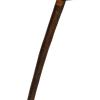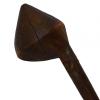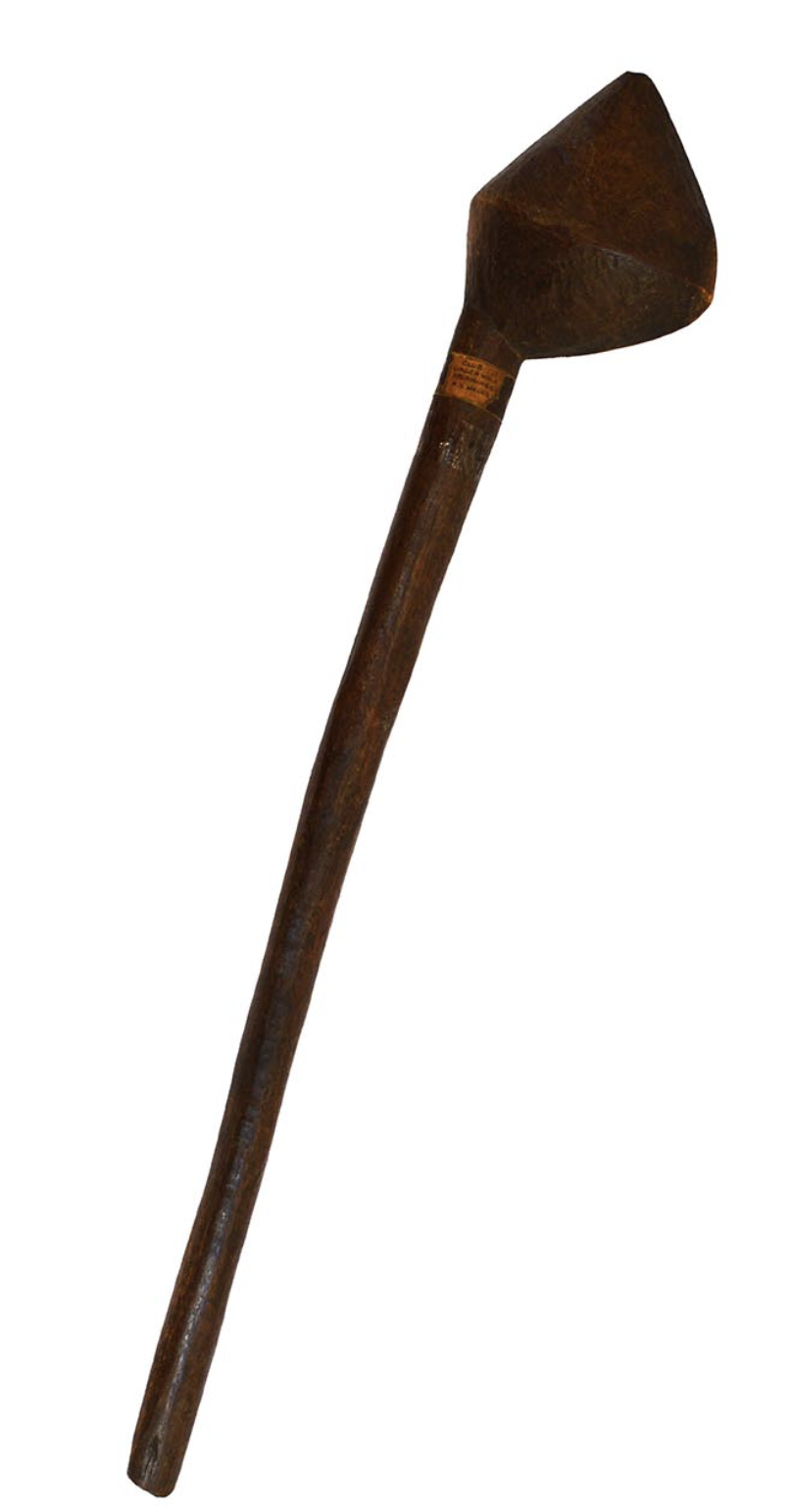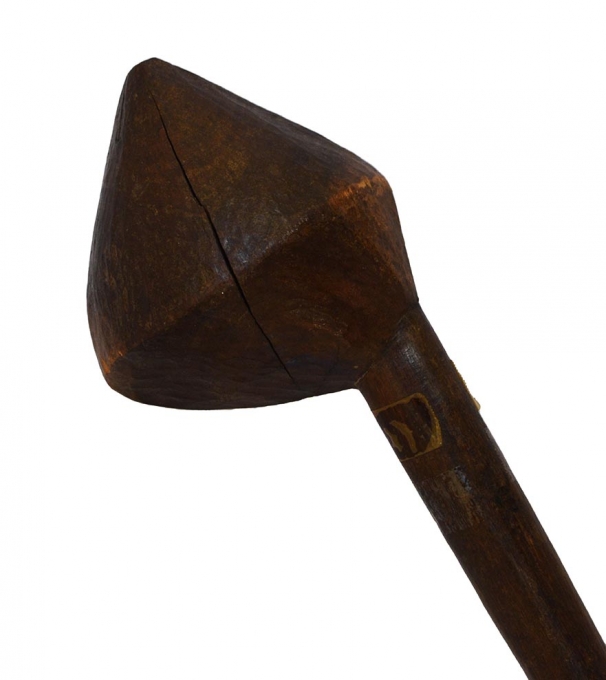The Aboriginals, who were unfamiliar with metal before the arrival of the English on their territory, produced weapons made entirely of wood, which they decorated or left plain. Traditional hunting weapons became increasingly rare, replaced by bows and arrows, as well as knives and other weapons brought by the settlers.
This club has a rounded end and is simply painted. There are no patterns, paintings, or engravings in the wood that would link it to a particular clan. It is therefore unlikely that this club was used in tribal warfare. Its simple design suggests that it was used daily by the Aboriginals in their hunting activities. The round, very heavy end may indicate that it was used for fishing. Its considerable weight helps it penetrate the water to stun fish swimming at shallow depths.
ANONYME
Killing Stick , c.1950
Art : Aboriginal
Origine : Autres / Others
Dimensions : 2,8 x 60 x 3 cm
Medium : Wood
Price : Nous contacter / contact us
N° : 4331



